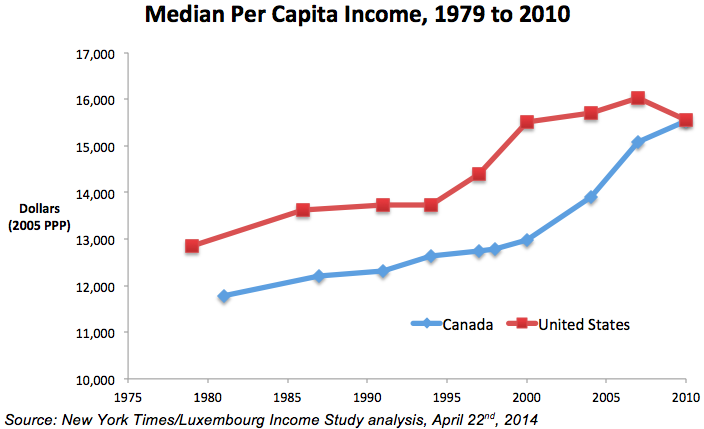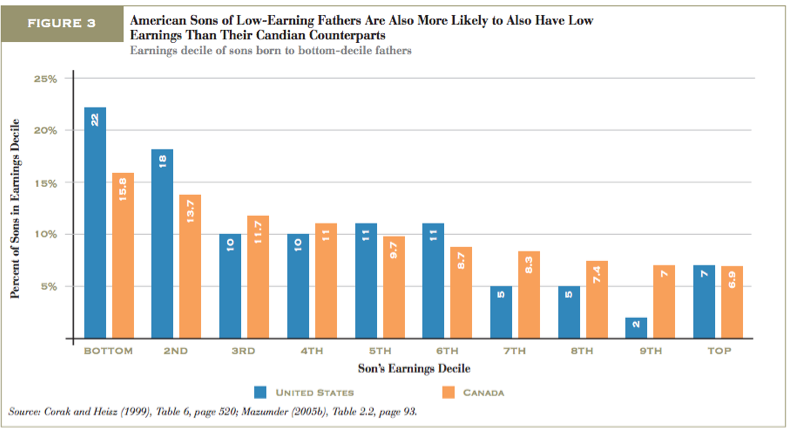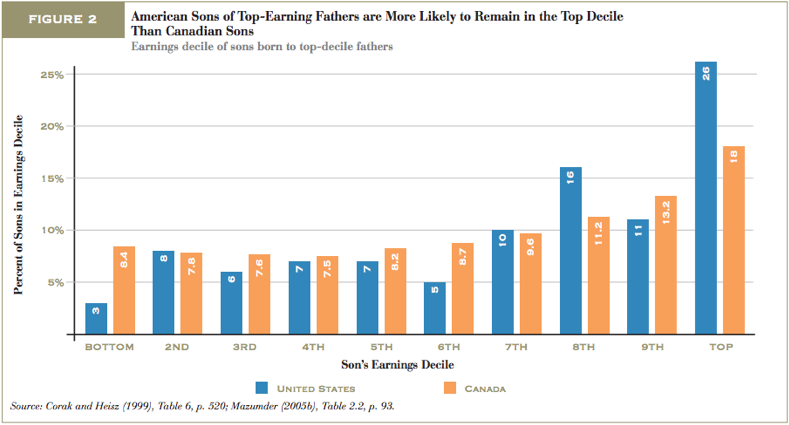Happy Canada Day! Canadians, especially those who like to compare themselves to the United States, have a couple of specific causes for celebration: higher median incomes and higher social mobility.
A Strong Middle Class: In Canada
Canada’s median income level may now exceed America’s, according to a recent report from the New York Times drawing on the Luxemburg Income Study,

Strong Social Mobility: In Canada
But comparing incomes only touches on part of Canada’s claim to the American dream. Canadians have not only enjoyed more broadly shared income growth; they’ve also seen more movement up and down the economic ladder.
These trends may of course be related, in either direction. Some economists argue that after-tax income inequality exacerbates inequality of opportunity and fences people into their current circumstances – previously on this blog we’ve argued that while the jury is still out on this connection, a combination of high inequality and low mobility is “toxic” in any case
Canadian boys born into the lowest income decile have a 38 percent chance of reaching the top half of the income distribution by adulthood: in America, the equivalent odds are 30 percent.
There is more stickiness at the bottom of the income distribution in the US. While 16 percent of Canadian boys in the bottom decile will stay on the bottom rung as adults, in America, 22 percent remain stuck in place at the bottom.

And in Canada, wealthy children seem less able to rest on their parents’ laurels: only 18 percent of Canadian boys from the richest decile remain there as adults, compared to 26 percent of similar American boys. While 8.4 percent of top-decile Canadian boys fall to the bottom decile, only 3 percent of American boys (perhaps protected by a “glass floor” against downward mobility) experience a similar fall from grace.

Learning from Our Friends in the North
Canada’s higher rates of social mobility probably don’t arise from different values. A Pew research study shows that the Canadian Dream mirrors its American counterpart: the ideal of equal opportunity is shared across the continent. But Americans are more likely to express dissatisfaction with their government’s efforts to give every citizen a fair shot at success: healthcare, early childhood education, and college accessibility all rank near the top of American concerns.
American politicians on both sides of the political divide are struggling to keep the American dream alive. As we’ve argued here before, Congress needs to think more explicitly about how to foster greater economic mobility, if the US wants to regain the social mobility, at least on our own continent.
The Brookings Institution is committed to quality, independence, and impact.
We are supported by a diverse array of funders. In line with our values and policies, each Brookings publication represents the sole views of its author(s).




Commentary
Has the American Dream Moved to Canada?
July 1, 2014